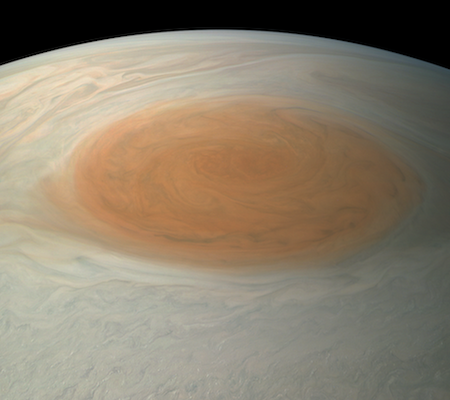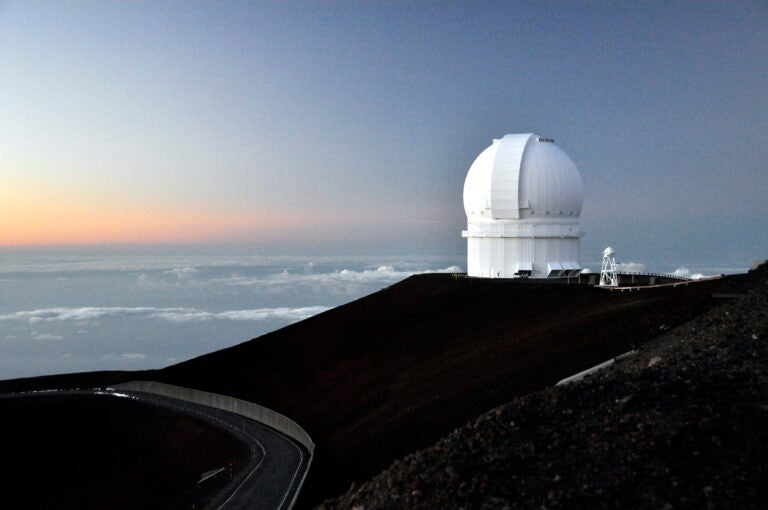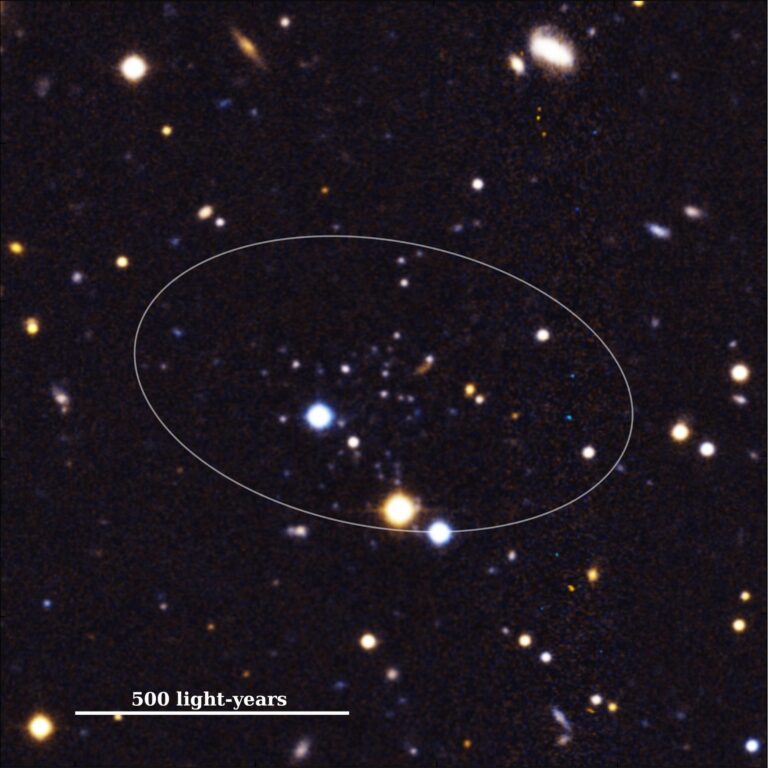A new study shows that Jupiter’s Great Red Spot, the planet’s massive storm that’s been observed since 1878, is going through some unexpected changes, like growing in height and deepening in color.
Jupiter’s Great Red Spot might not be losing its greatness after all. Although the storm has been dwindling for about a century and a half, a new study published in the Astronomical Journal shows that while its length continues to decrease, its height is actually increasing. The new discovery adds to the storm’s list of unpredictable behaviors.
“Storms are dynamic, and that’s what we see with the Great Red Spot. It’s constantly changing in size and shape, and its winds shift, as well,” said Amy Simon, planetary atmosphere expert at NASA’s Goddard Space Flight Center and lead author of the paper, in a press release.
Observations of the Great Red Spot have been quite extensive over the years, giving researchers a solid record to look back on. The first confirmed observation dates back to 1831, and although technology wasn’t too advanced at the time, observers were able to track the storm’s size and drift by placing eyepieces marked with crosshairs on their telescopes.
By using this technique, and other methods as technology advanced, observations have been logged at least once a year since 1878. More recent data has been collected by the two Voyager missions, starting in 1979, and yearly observations by the Outer Planets Atmospheres Legacy program, which uses NASA’s Hubble Space Telescope and is run by scientists from NASA’s Jet Propulsion Laboratory and the University of California at Berkeley.
Simon and her team of researchers combined these records to study changes in the storm’s size, color, shape, drift rate, and wind speed, and found that the Great Red Spot is now only about a third the size of its 1878 width. At one point, the storm was large enough to house three Earths, but now it’s barely large enough to harbor one.
Citizen scientist Björn Jónsson created this image of the Great Red Spot using NASA’s Juno spacecraft’s JunoCam. This rendition of the image, taken on July 10, 2017, shows how the storm looked from Juno’s perspective as it cruised 8,648 miles (13,918 kilometers) above Jupiter’s clouds.
The decrease in size hasn’t been constant, though. Back in the 1920s, the storm actually grew for a short period of time before continuing to shrink again. “There is evidence in the archived observations that the Great Red Spot has grown and shrunk over time,” said Reta Beebe, an emeritus professor at New Mexico State University in Las Cruces and co-author of the paper. “However, the storm is quite small now, and it’s been a long time since it last grew.”
The strange storm travels westward, opposite Jupiter’s eastward rotation. It was previously believed to move at a constant rate; however, the study found that it’s traveling through Jupiter’s atmosphere faster now than in the past. Researchers also discovered, surprisingly, that no change in internal wind speed has occurred over time. Since the storm is becoming more compact, they expected the winds to become stronger, but found that the wind is traveling at the same speed that it was before. Rather than gusting more fiercely at its base, the storm is instead growing taller.
Another noteworthy development is that the Great Red Spot isn’t so red anymore — it’s actually been turning a deep orange since 2014. The researchers think that the increasingly tall storm could be carrying the chemicals responsible for its color higher into Jupiter’s atmosphere, increasing their exposure to UV radiation and causing their color to change. However, further research is needed to corroborate this theory.
Although the increase in height is pretty small compared to its steady decrease in length, and its change in color isn’t too drastic, the study gives decent clues as to what the storm’s next move might be. For now, though, all we can do is sit back and enjoy the powerful storm while it lasts, because with a history of unexpected behavior and disproven predictions, the Great Red Spot’s ultimate fate still remains a mystery.
“If the trends we see in the Great Red Spot continue, the next five to 10 years could be very interesting from a dynamical point of view,” said co-author Rick Cosentino of NASA’s Goddard Space Flight Center. “We could see rapid changes in the storm’s physical appearance and behavior, and maybe the Red Spot will end up being not so great after all.”











